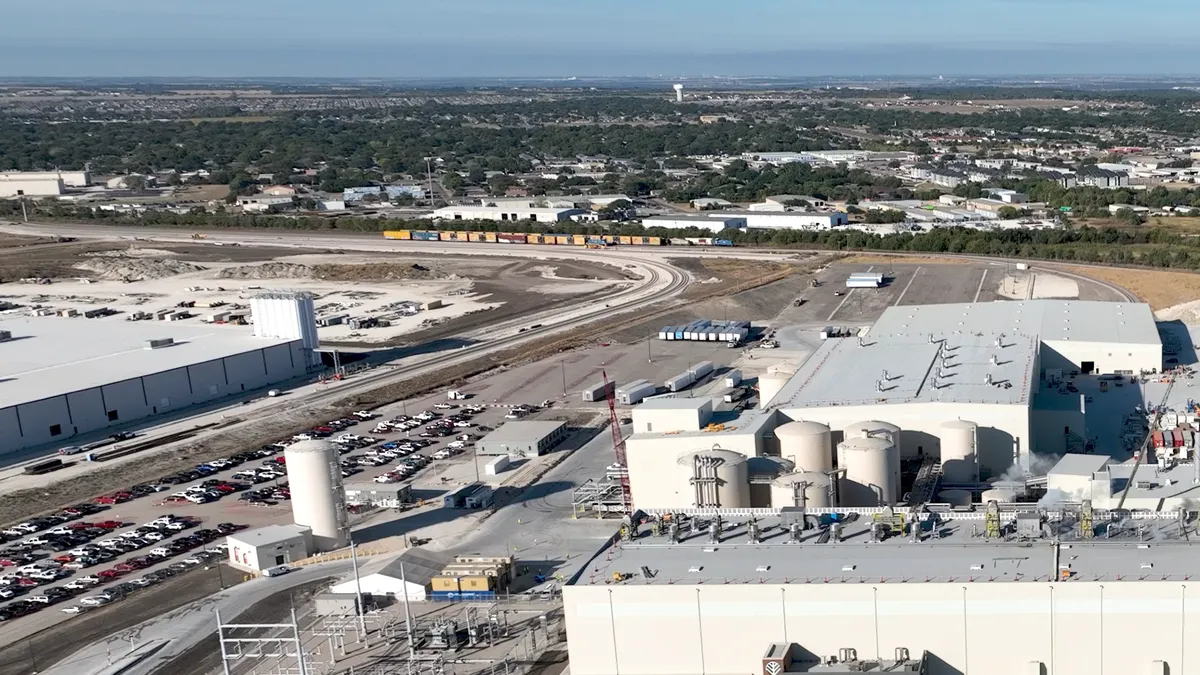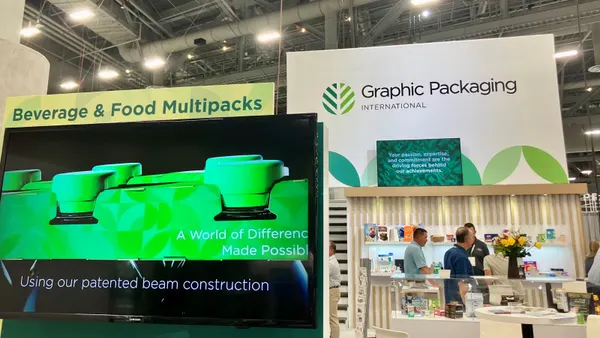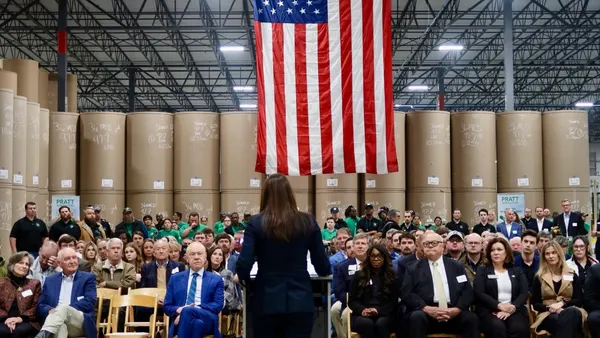- Overview: Graphic Packaging International’s third-quarter packaging sales volumes fell 2% year over year, executives said during Tuesday’s earnings call. Although certain customers are running promotions, those are “insufficient to drive overall volumes higher” as consumer spending remains sluggish, said CEO Mike Doss. Customer order flows became less predictable in Q3 because “we also saw more of our CPG customers timing their purchases as a way to manage cash,” he said. Doss also noted the upcoming departure of CFO Steve Scherger to become Amcor’s CFO and Chuck Lischer’s appointment to the interim position.
- Waco opens: GPI began operating its long-anticipated recycled paperboard mill in Waco, Texas, ahead of schedule, producing its first commercially saleable rolls in October. Full production is expected in 12 to 18 months. The site is a “critical enabler for the consumer packaging we sell,” Doss said, adding that the location makes it “highly attractive” for sourcing recovered fiber feedstock, given its proximity to four major urban centers. “With the inclusion of paper cups in the Recycled Materials Association's recently updated guidelines, the key strategic investment we made at Waco looks even better,” considering it’s designed to process up to 15 million paper cups daily, Doss said.
- Closures and market balance: Doss announced that GPI’s recycled paperboard plant in East Angus, Quebec, will end production Dec. 23. Executives have long said East Angus would close once Waco is operational. The East Angus closure adds to the capacity loss that already occurred with the closure of the Middletown, Ohio, facility earlier this year as well as competitors’ closures, so Waco’s 500,000 tons of annual capacity will add “only about 75,000 tons more than the industry had at the start of 2025,” Doss said. “We do not expect the startup of Waco to materially impact recycled paperboard market balance.”
- Substrate strength: “We expect our recycled paperboard to replace more expensive bleached paperboard in a range of markets,” Doss said, referencing production both at Waco and its mill in Kalamazoo, Michigan. However, a “large imbalance” in the solid bleached sulfate market has resulted in competitors lowering their SBS pricing, which “essentially matches recycled packaging pricing, despite the obvious lack of profitability that those kinds of prices apply,” Doss said. Both the American Forest & Paper Association’s quarterly data and competitors’ earnings call discussions suggest shifts in SBS dynamics. This “unusual competitive behavior” in SBS is affecting sales and profitability, but is not sustainable, Doss said. GPI’s investment in recycled board is sound because its product can match the appearance and performance of SBS while costing less to manufacture, he said.
- Outlook: “While we are not satisfied with current results, we are confident that we can meaningfully improve margins,” Doss said. GPI’s full-year guidance for net sales remains unchanged at $8.4 billion to $8.6 billion. The company lowered its guidance for full-year earnings before interest, taxes, depreciation and amortization to between $1.4 billion and $1.45 billion. While that’s down from the tightened projection of $1.45 billion to $1.55 billion mentioned in July, it’s still within an original projection range of $1.4 billion to $1.6 billion. “We can't control demand, and lately we can't predict it any better than our customers or our competitors can, but Graphic Packaging is at a very different place today” than a year ago, Doss said.

Graphic Packaging International begins operating Waco mill
With the long-anticipated Texas mill now open, executives on Tuesday’s earnings call announced timing for a shutdown elsewhere.

Recommended Reading
- Graphic Packaging International embracing paper cup opportunities, CEO says By Katie Pyzyk • Sept. 5, 2025
- Graphic Packaging’s costs climb as Waco mill nears finish line By Katie Pyzyk • July 29, 2025








